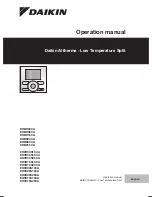
Chapter 1. Introducing the 3ware® SATA RAID Controller
12
3ware Serial ATA RAID Controller User Guide
as spares for each other. The capacity used for each drive is rounded down to
the nearest GB for drives under 45 GB (45,000,000,000 bytes), and rounded
down to the nearest 5 GB for drives over 45 GB. For example, a 44.3 GB
drive will be rounded down to 44 GB, and a 123 GB drive will be rounded
down to 120 GB. For more information, see the discussion of drive coercion
under “Creating a Hot Spare” on page 108.
Support for Over 2 Terabytes
Windows 2000, Windows XP (32-bit), Linux 2.4, and FreeBSD 4.x, do not
currently recognize unit capacity in excess of 2 TB.
If the combined capacity of the drives to be connected to a unit exceeds 2
Terabytes (TB), you can enable auto-carving when you configure your units.
Auto-carving divides the available unit capacity into multiple chunks of 2 TB
or smaller that can be addressed by the operating systems as separate
volumes. The carve size is adjustable from 1024 MB to 2048 MB (default)
prior to unit creation.
If a unit over 2 TB was created prior to enabling the auto-carve option, its
capacity visible to the operating system will still be 2TB; no additional
capacity will be registered. To change this, the unit has to be recreated.
For more information, see “Using Auto-Carving for Multi LUN Support” on
page 91.
3ware Tools for Configuration and
Management
3ware software tools let you easily configure the drives attached to your
3ware RAID controller, specifying which drives should be used together as a
RAID unit and the type of RAID configuration you want, and designating hot
spares for use if a drive degrades.
3ware provides the following tools for use in configuring and managing units
attached to the 3ware controller:
•
3BM (3ware BIOS Manager)
3BM is a BIOS level tool for creating, deleting, and maintaining disk
arrays, rebuilding arrays, designating hot spares, and setting controller
policies. 3BM is the tool most frequently used to configure units
immediately after installation of the controller, but can also be used after
installation to maintain the controller and associated drives.
For general information about working with 3BM, see Chapter 5, “3ware
BIOS Manager 2 (3BM 2) Introduction.”
















































